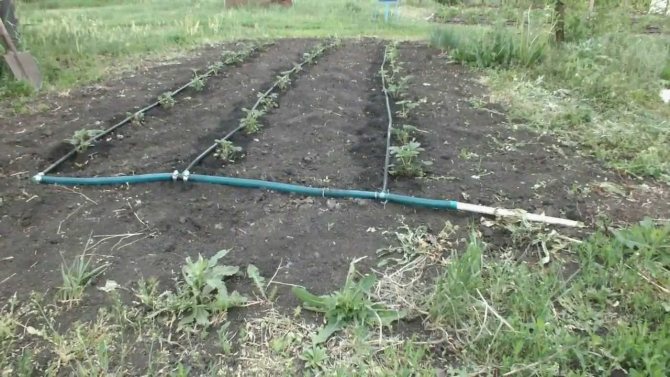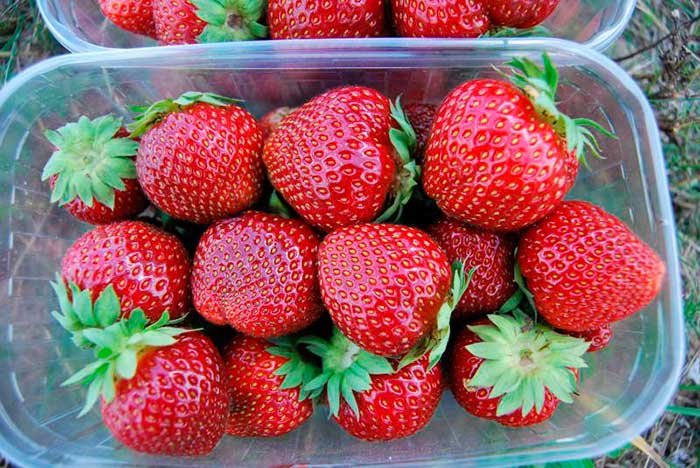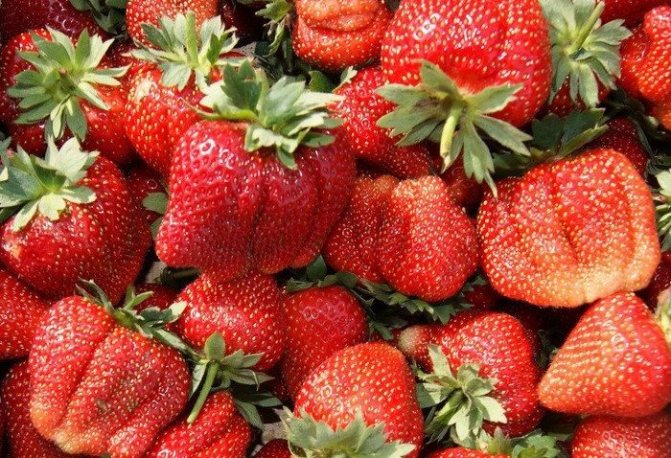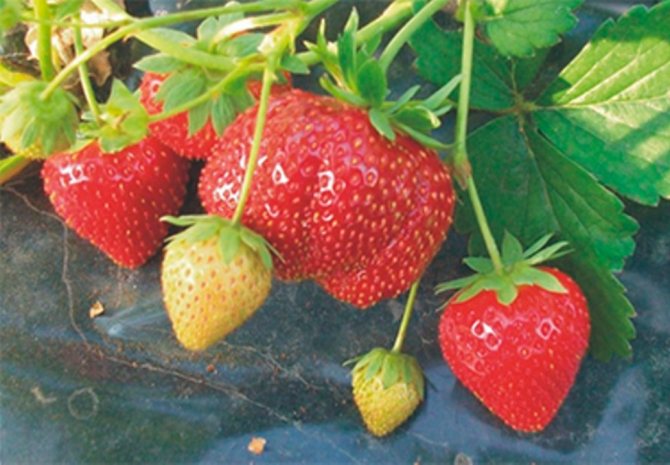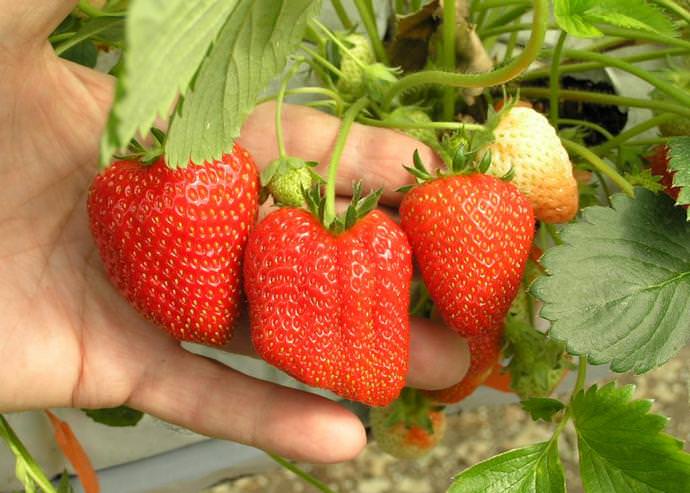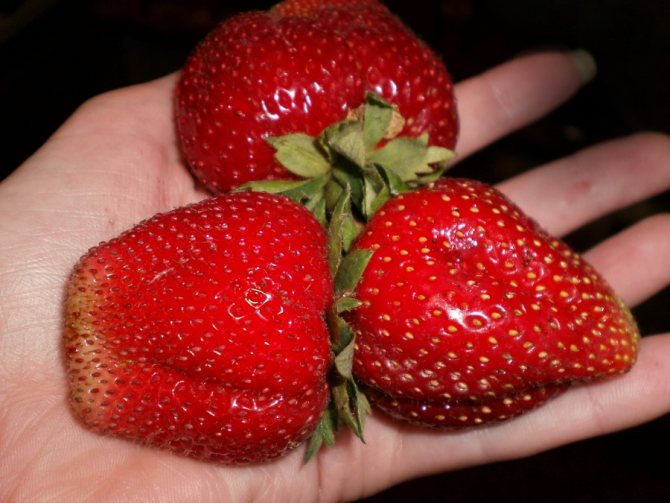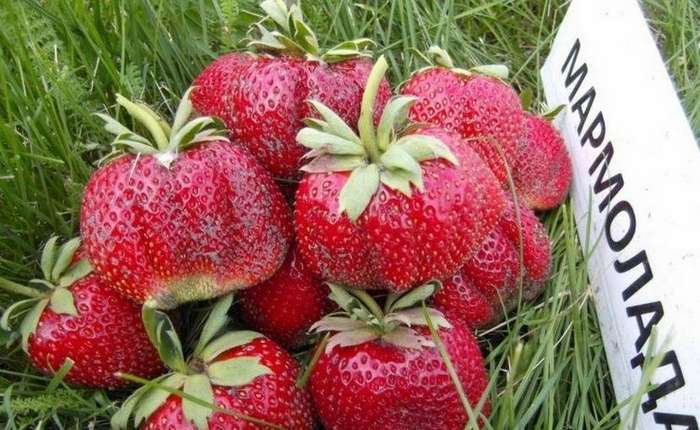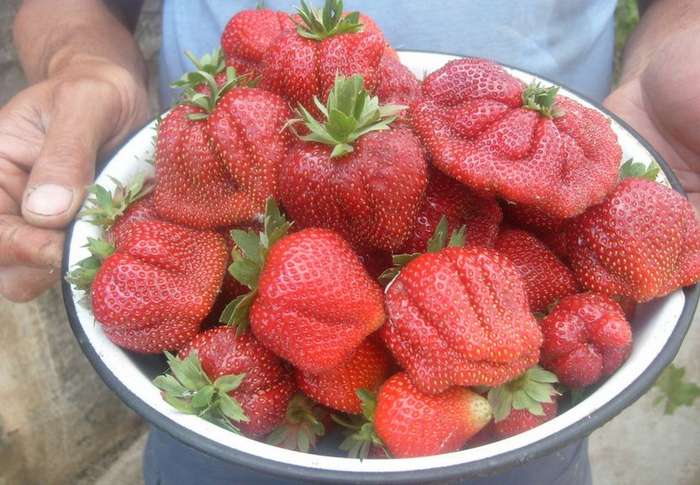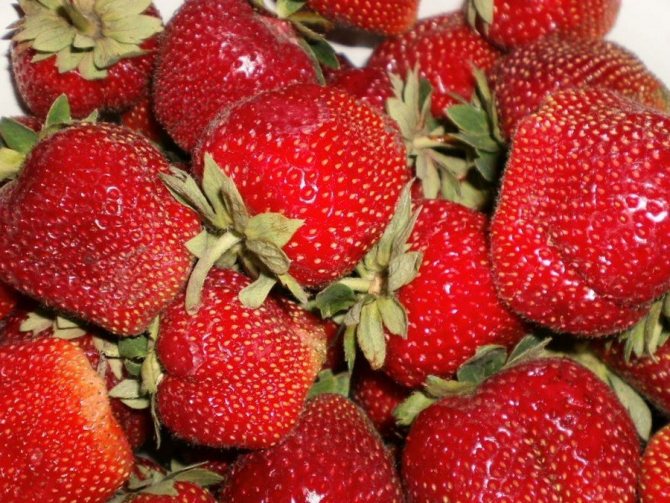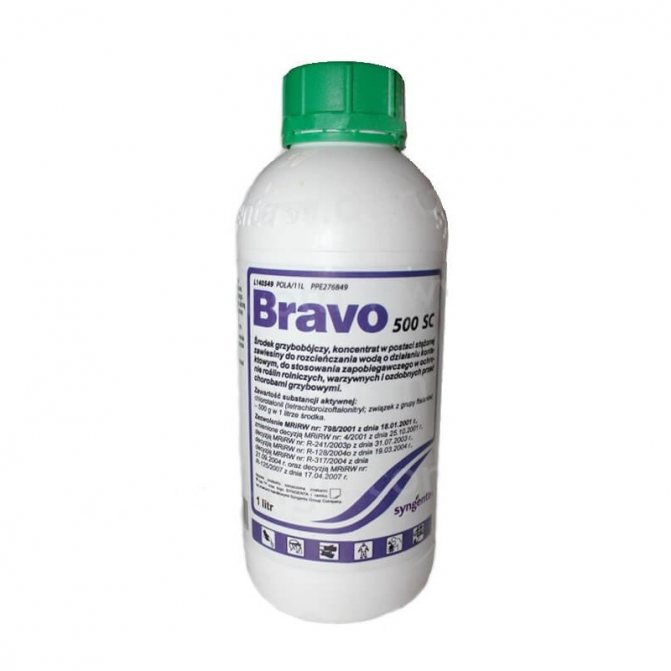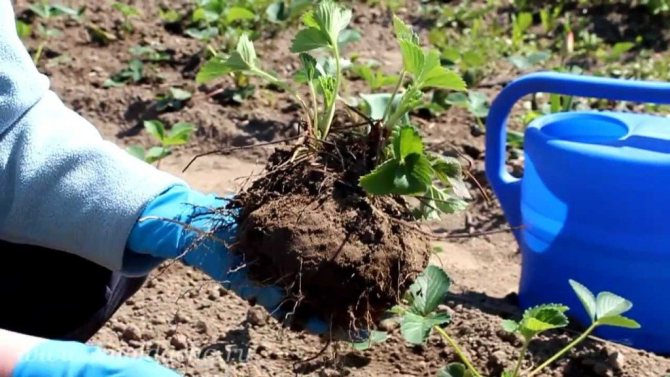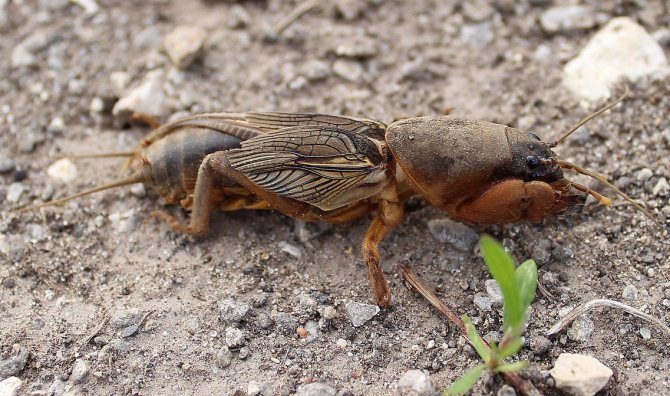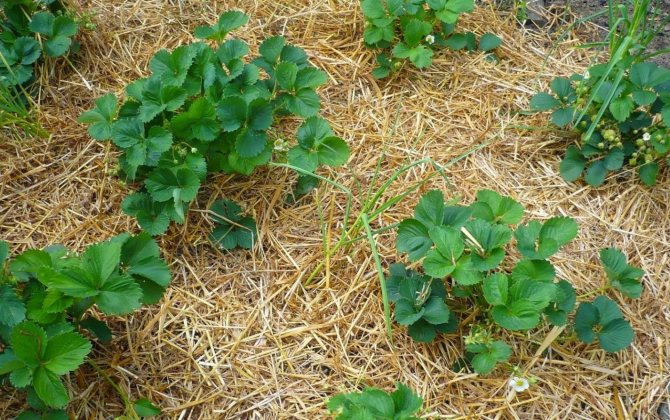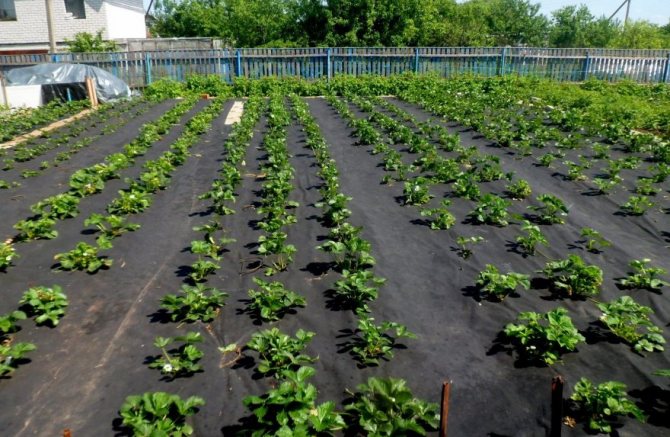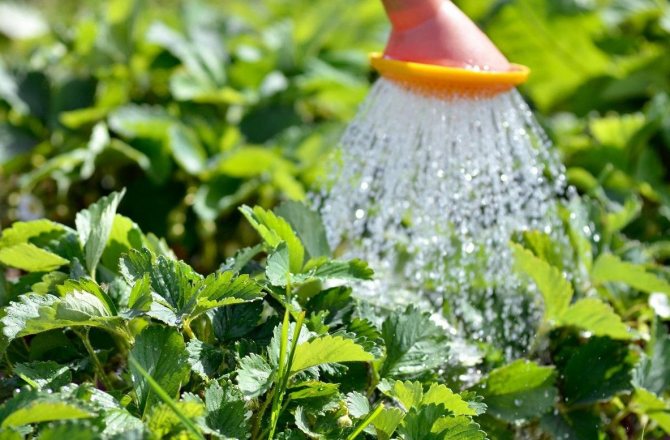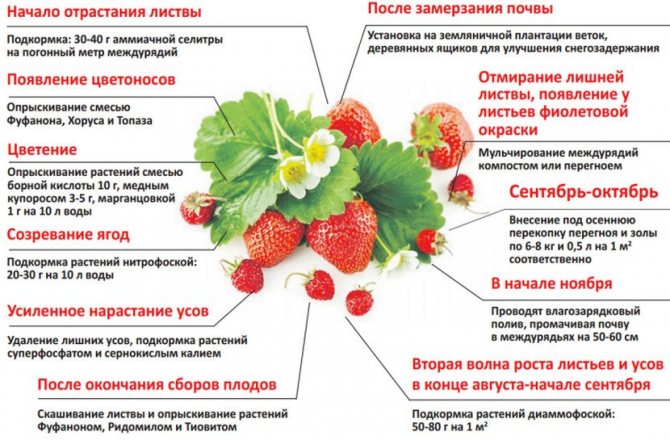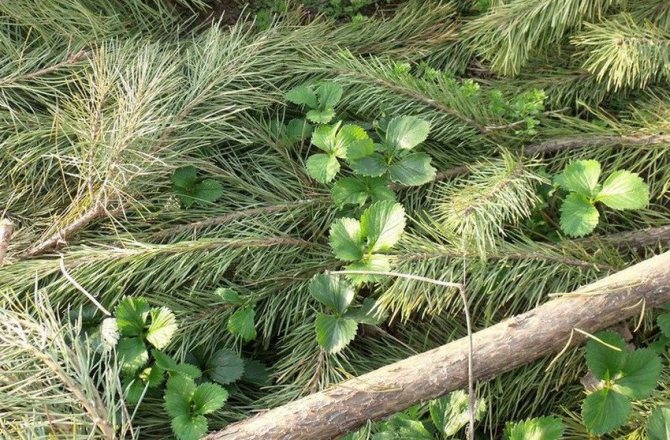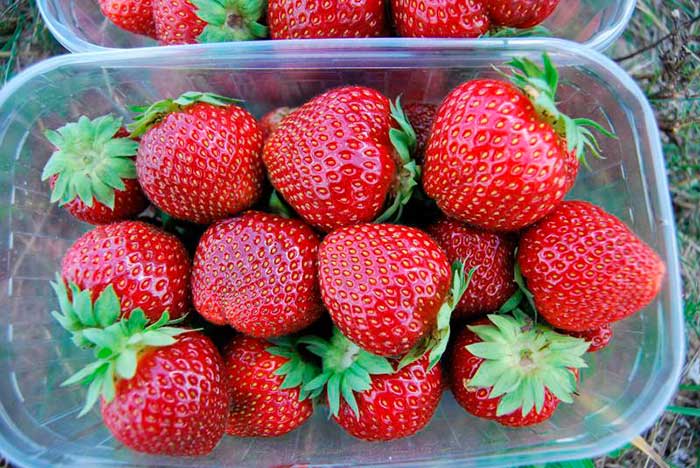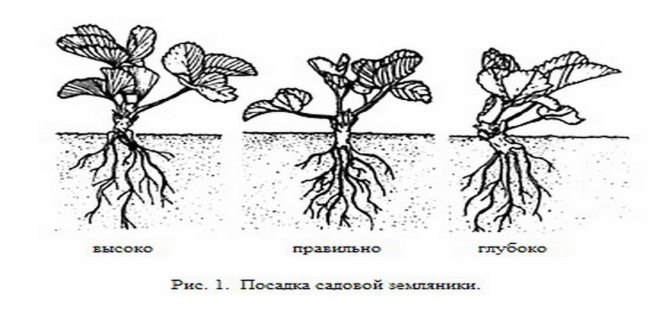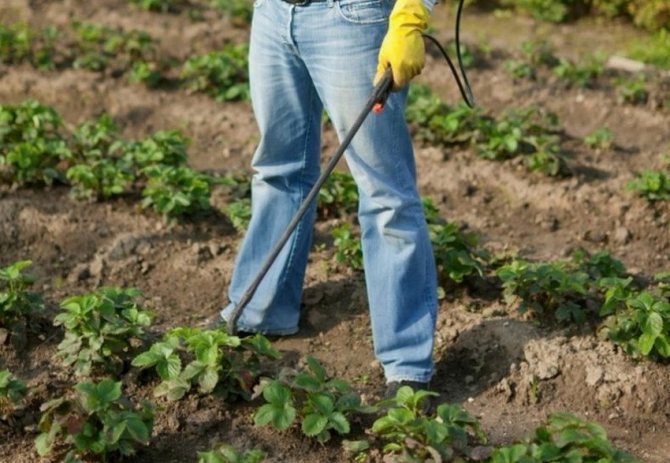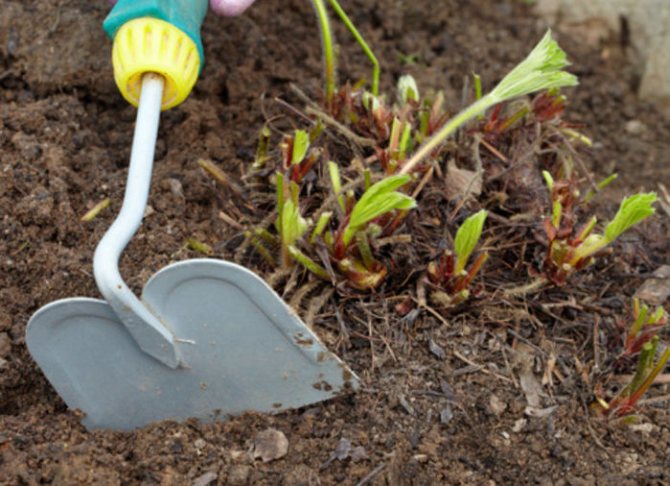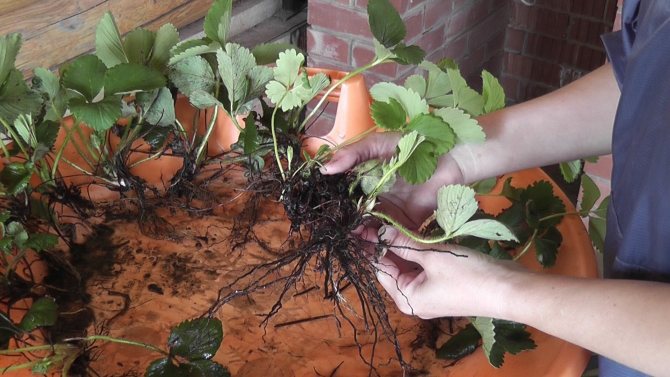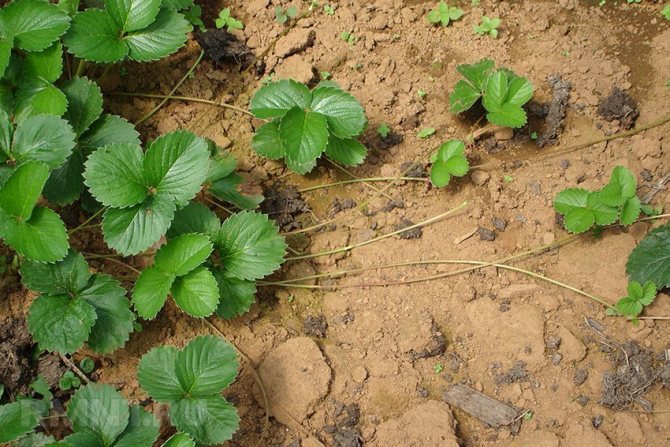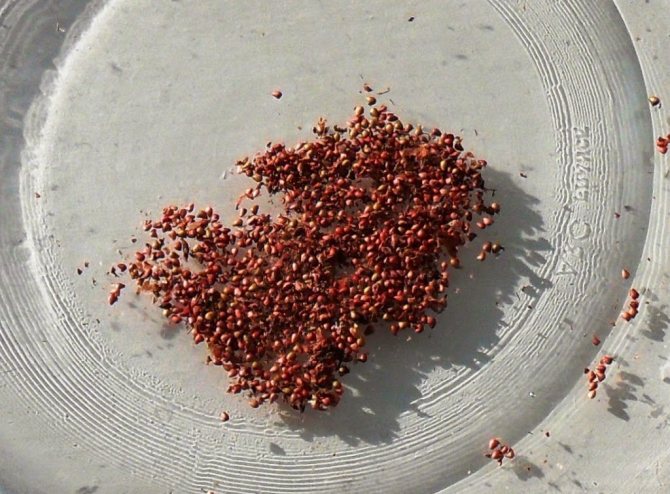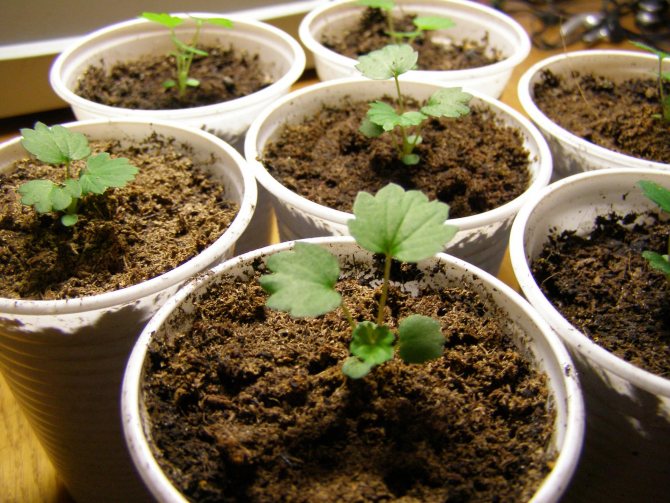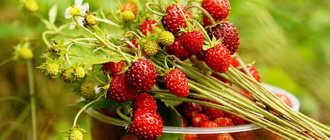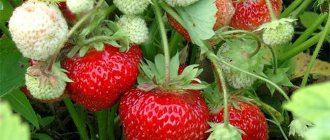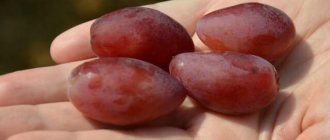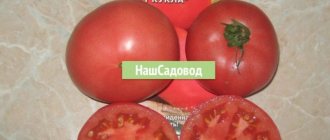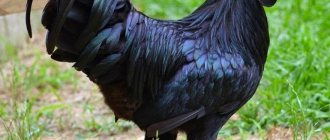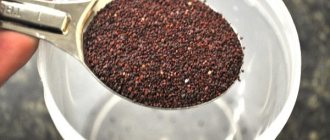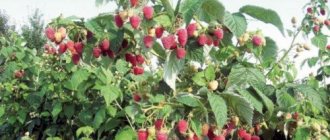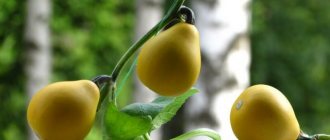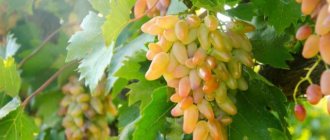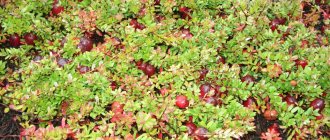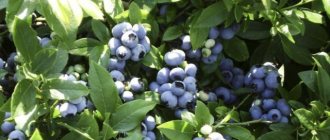How are strawberries different from strawberries?
The tasty and healthy berry grown in our gardens, called strawberries, is actually garden strawberries. The confusion with the names began in the 18th century due to the similarity of the berries and their taste. Large-fruited varieties of garden strawberries are now grown in the gardens, and strawberries are practically not found.
Table: differences between garden strawberries and strawberries
| Criteria for evaluation | Garden strawberries | Strawberry |
| External description | A low-growing plant with dark green leaves. The bush is up to 30 cm high. The berries are large, dark red, fully colored. Peduncles are hidden under the leaves. Strawberries are monocytes. | The strawberry bush is more powerful than that of strawberries, up to 40 cm high. The leaves are large, light green, strongly corrugated. The berries are small, elongated, with a pronounced aroma. The color can be red, pink, crimson, purple. The berries are not completely colored; they have specks of white or light green color. The berries do not fall on the ground. Peduncles are directed upwards and are located above the leaves. It has pistillate female flowers and staminate male flowers. Male plants do not bear fruit. |
| Yield | Differs in good productivity. In one place it can bear fruit for up to 5 years. | The yield is low, since the size of the berry is small and the male bushes are not capable of bearing fruit. |
| Distribution locations | It has become widespread both in amateur gardens and on farmers' plantations due to its high yield. The bred varieties are more than 2 thousand. There are wild strawberry varieties, but they have small berries. | It is extremely rare in gardens, and has no industrial value at all. It is represented by only a few types. |
| Growing conditions | It tolerates high temperatures and drought well. Many varieties have good winter hardiness. | More demanding for watering. Prefers shaded areas. Good winter hardiness. |
| Reproduction methods | Garden strawberries and strawberries are propagated by seeds, whiskers and bush division. But garden strawberries have whiskers longer than strawberry ones and there are more of them in quantity. | |
Another difference is the easy separation of the strawberry from the stalk. Strawberries have stronger berries.
Photo gallery: external differences between garden strawberries and strawberries
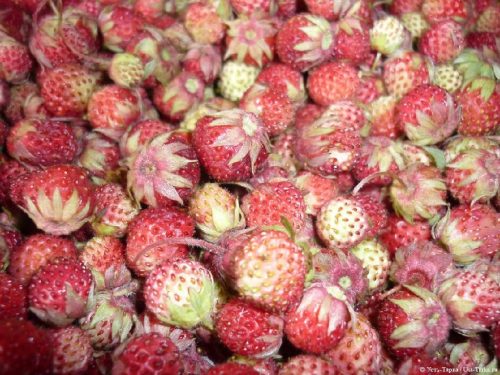
Strawberries are smaller than strawberries
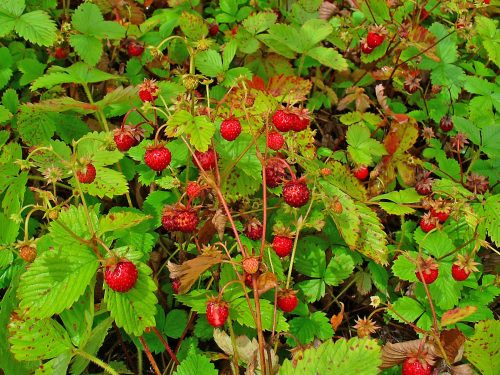

Strawberry bush
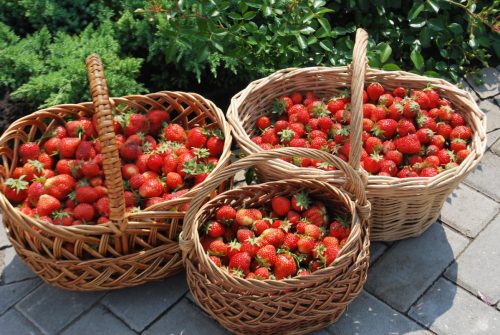

Garden strawberries are famous for their yield
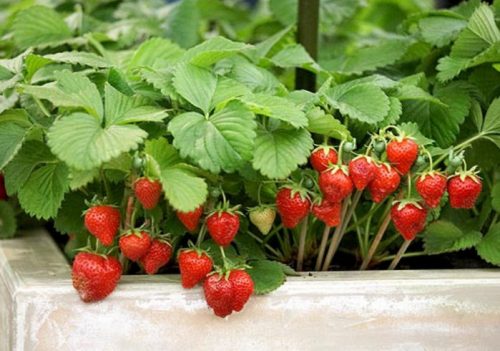

Garden strawberry bush
Where does guanabana grow?
Guanabana is an amazing tropical plant that has a lot of names behind which it hides like a spy. "Sour cream apple", graviola, prickly annona - all this is guanabana. There is a lot of talk about this plant now, because, according to research, the fruits of guanabana have medicinal properties, even anti-cancer properties. Let's take a closer look at this interesting plant.
Where does guanabana grow and what is it like?
As it becomes clear from the name of this plant, it clearly does not grow in our area. The guanabana tree is native to Latin America. But in our time, when the beneficial properties of the plant are already known, as well as the taste, guanabana can be found in all the tropical forests of the world.
We figured out the place of residence of the guanabana, and now let's move on to the second question and find out what this miracle plant looks like. As mentioned earlier, guanabana is an evergreen tropical tree. The leaves of the tree are large and fragrant, since guanabana is related to ylang-ylang, its smell is somewhat reminiscent of the aroma of this beautiful plant, the oils from which can often be found on our market. The height of the plant for the most part does not exceed the mark of six meters. Guanabana blooms only once a year, while, interestingly, flowers appear not only on the branches of the tree, but also on the trunk itself. And, of course, the period of flowering is followed by a period when fruits appear on the tree, the very "sour cream apples". First, small green fruits appear on the tree, which then begin to grow rapidly. Ripe fruit can weigh up to seven kilograms, and reach thirty centimeters in length. So the initial small size is very deceiving. The type of fruit is also very interesting. Thin green peel with thorns hides a tender and juicy white flesh with black bones. Guanabana is said to taste like a mixture of pineapple, strawberry and light citrus notes.
Guanabana fruit - interesting facts
Let's take a closer look at this amazing fruit that has been talked about so much. We have already figured out what it looks like externally, but what are its useful properties?
Guanabana contains vitamin C, folate, various B vitamins, phosphorus, iron, and proteins. If the fruits of guanabana are eaten regularly, then they will contribute to the maintenance of microflora in the stomach and the normalization of its work, as well as the work of the liver. Not so long ago, studies were carried out that showed that guanabana has anti-cancer properties - the fruit helps to destroy foreign cells, the formation of which is the cause of the appearance of tumors.
How to Grow Guanabana?
Guanabana is a perishable product, so things are not going well with imports. Of course, the fruits are harvested unripe for transportation and they ripen during this time, but there is one "but" - ripe fruits are suitable for eating within literally a few days, and even then, if they are stored in the refrigerator. So it's much easier to grow guanabana yourself, at home.
Recently, guanabana has become quite a popular exotic plant for the home, since cultivation of guanabana will not cause much trouble. Guanabana seeds can be planted in a small container or tub that will be enough for the plant. Guanabana tolerates drought and excessive watering quite well, which is simply an irreplaceable quality for forgetful people. Plus, the smell of guanabana leaves and flowers will refresh your home much better than any chemical air freshener. And you can enjoy delicious fruits already in the third year of the plant's life, and for this you will absolutely not need to go to Latin America.
History of the Marmalade variety
The name of Marmalade is bright and very memorable in summer, and the variety itself compares favorably with the size of berries, taste and unpretentiousness.
The variety was bred by Italian breeders. Obtained in 1989 from crossing Holiday and Gorella varieties.
Italians call it Marmolada and consider it very promising.
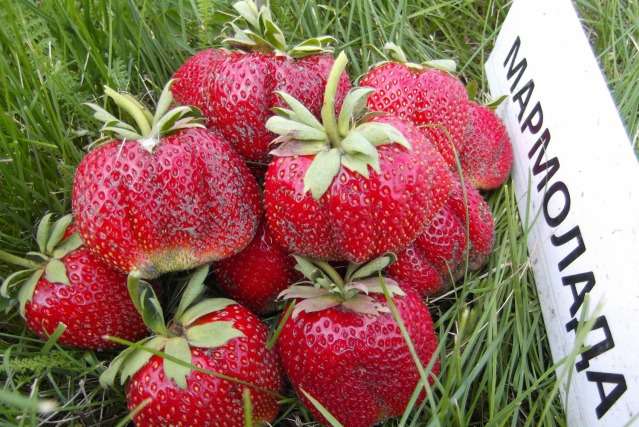

Italians call the variety Marmolada
Garden strawberry Marmalade is suitable for cultivation in a continental climate. Places favorable for her breeding are the middle zone of Russia, Belarus, Ukraine. Crimea and Kherson region are ideal. In the northernmost districts of the Moscow region, it will feel worse.
Description of strawberry Marmalade
The bush is compact, medium-sized, with raised leaves of a dark green color. Gives a lot of mustache.The peduncle is located at the level of the foliage or slightly higher, thick and tall. Inflorescences are multiflorous, powerful, directed upwards. Intense flowering.
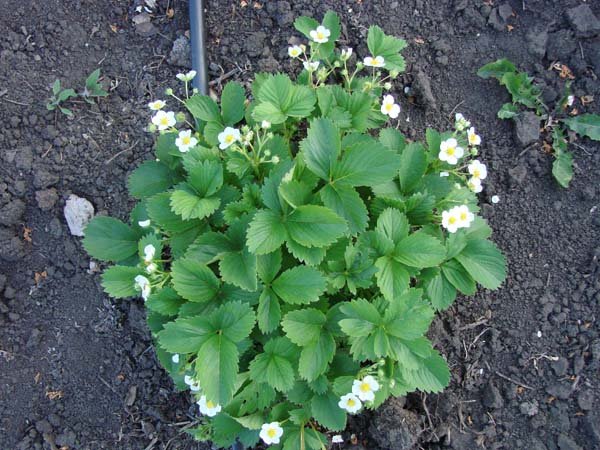

Marmalade has a compact bush with raised leaves
The fruits are large - from 25 to 30 grams, some reach a weight of 40 grams. The berries are conical in shape, shiny, colored in a uniform red color of medium saturation. Ripening of a berry begins with a cutting, so the tip, even when fully ripe, can sometimes remain white. The sepal is bright green. The fruit may have a slightly bumpy surface. The stem is easily separated from the berry.
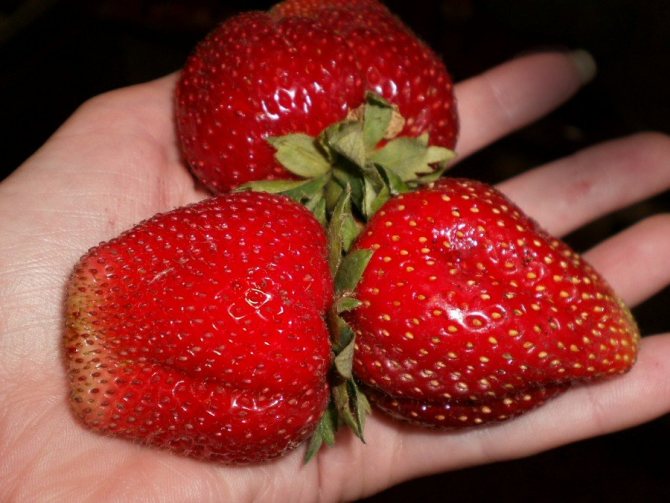

Strawberry Marmalade is famous for its large fruits
The pulp is red, juicy. Tight enough. There are small cavities inside. The berry is sweet, with a slight sourness. The aroma is pronounced.
Table: advantages and disadvantages of the variety
| Benefits | disadvantages |
| Resistant to powdery mildew and root diseases. | It is susceptible to the disease of brown and white spot, has a weak resistance to gray rot. |
| It tolerates drought and hot weather well. | Does not tolerate acidic soils - yield decreases. |
| Has good winter hardiness. | With thickened plantings, the berry becomes smaller. |
| The fruits are very large and easily detach from the stalk. | If ripening takes place in damp and cool weather, then this can negatively affect the taste. In addition, the berry loses its flavor. |
| Stores well and has excellent transportability. | |
| It is famous for its increased productivity, it is not for nothing that Marmalade is grown on an industrial scale. | |
| Does not require special growing conditions and intensive care. | |
| Differs in excellent taste. | |
| Ripe berry has an excellent presentation. |
Prophylaxis
In general, the Marmalade variety is quite resistant to damage by harmful insects and diseases, but it is still better to carry out preventive measures.
Timely spraying with high-quality fungicides and insecticides will save strawberries from infectious infections, fungus, and rot. Strictly adhere to the manufacturer's instructions, and be aware that some formulations cannot be used at the same time due to their chemical incompatibility.
The video shows the prevention of strawberries:
Planting and leaving
Choosing a place and preparing the soil
In order for Marmalade to give a high yield, you need to choose the right site:
- the landing site should be well lit by the sun. Ideal location - southern and south-western areas with a slight slope of 1 - 3 °;
- the site must be protected from cold northerly winds, but at the same time have good airflow. If the place is humid, without ventilation, garden strawberries will easily pick up fungal diseases.
- areas with high groundwater levels should be avoided. The permissible level is 80 cm from the surface of the earth. If you intend to plant Marmalade in low-lying areas where there is a threat of flooding, then in this case you will have to build high beds;
- Marmalade prefers light and neutral soils with a pH level of 5.5 - 6.5. On acidic soils, the soil is liming before planting;
Excellent harvests will be obtained on podzolized chernozem soils and on light dark gray forest soils.
- garden strawberries love fertile lands.
The indicator of soil fertility can be easily determined by the following criteria: areas where nettles and wood lice grow are saturated with nitrogen and do not need to add nitrogen fertilizers. White clover grows in nutrient-poor soils. Mother-and-stepmother, horse sorrel and horsetail are indicators of heavy soil that must be diluted with sand.
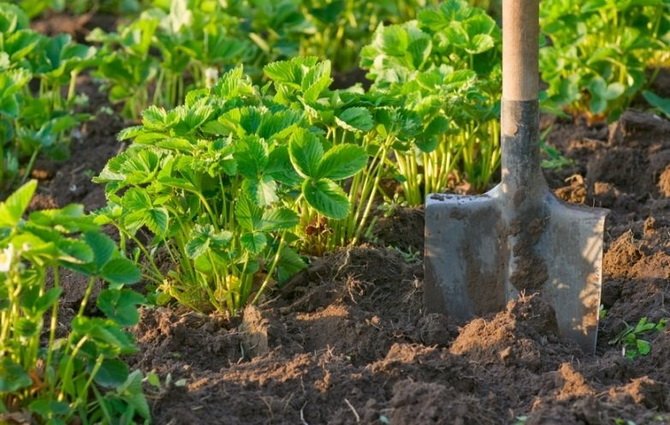

The landing site should be sunny and protected from cold winds.
We prepare the selected area as follows:
- we dig up the site and free it from weeds and old plants. The easiest way to do this is with a pitchfork;
- for each square meter we apply a bucket of compost or completely rotted manure, as well as nitrogen and potassium fertilizers of 50 g each, 100 g of magnesium fertilizers and superphosphate - 50 g. To reduce the cost of purchasing fertilizers, we apply them directly to the beds or into the planting hole.
It is good if garlic and onions, legumes, leafy vegetables, and root vegetables grew in the prepared area before planting. Potatoes and tomatoes are undesirable, since garden strawberries have common diseases and pests with these plants, in addition, these vegetables greatly deplete the soil. Do not plant young seedlings in a place free of old strawberries.
Strawberries can be planted in their old place only after 3 years.
Video: blooming marmalade
Boarding time
Strawberries are planted in spring and autumn. However, early autumn is considered the most suitable time for planting marmalade garden strawberries. Terms - from the second decade of August and no later than mid-September. The Marmalade planted at this time will have time to take root before the first frost and the next season will delight you with the harvest.
Spring planting dates are from the third decade of April to mid-May. If you plant garden strawberries in the spring, then you will not get a harvest by the summer. But Marmalade is guaranteed to take root and grow stronger for the coming winter, and in the summer you will collect an excellent harvest of fragrant berries. For garden strawberries, which were planted in spring, the first flowers are best cut off. This will allow the plant to retain strength for further development.
Garden strawberries should be planted on a cloudy day or in the afternoon, in the late afternoon. The afternoon sun will not be able to harm the seedlings, and the evening coolness will help the roots to better settle in a new place.
Landing scheme
When planting strawberries Marmalade, we use the following scheme - row spacing at a distance of 50 centimeters from each other, we plant seedlings in the garden every 35 - 40 centimeters. Due to the large number of peduncles, the plant needs more space, and the root system will be able to develop freely.
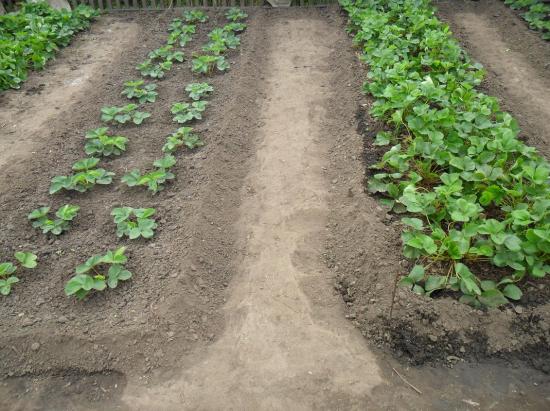

Sufficient free space is required for the normal development of Marmalade
The seedling hole should be deep enough so that the roots are vertical.
Step-by-step process of planting Marmalade:
- Pour the necessary fertilizers into the hole (unless you immediately applied them to the beds) and moisturize well.
- Seedlings can be treated in an antifungal solution (Fundazol), and then immediately rinsed with water.
- The seedling root should be 7 centimeters long. If it is longer, cut to size.
- When planting, make sure that the growth point from which the leaves appear does not sink into the ground.
- Lightly compact the soil around the plant, but not too much, the roots should have access to oxygen.
- Pour the Marmalade well.
- After watering, to avoid rapid overdrying of the soil, mulch with dry soil or humus.
It is important to know that Marmalade strawberries give good yields in the second year after planting. In the fourth year, the yield drops dramatically. Therefore, it is best to transplant it to a new location every 4 years.
Table: Watering Marmalade
Strawberries are very fond of irrigation. Grows especially well with drip irrigation.
| Season | Watering frequency |
| Spring |
|
| Summer | If the weather is dry and hot, then water each time after harvesting 7–10 liters per 1 sq. M. |
| Fall | In September and October, we water strawberries every week at 10-12 liters per square meter, provided there is no rain. |
Water for watering strawberries should be warm and settled.
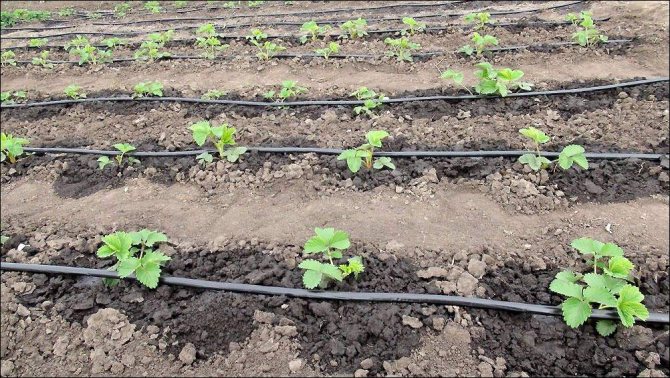

Marmalade responds especially well to drip irrigation
Table: top dressing
| When to fertilize | What to feed |
| After wintering, to help weakened plants when new foliage is being built up. | Mullein solution 1: 6 with the addition of 60 g of superphosphate and 150 g of wood ash - for 10 liters of water. Chicken manure can be used instead of mullein, but it should be diluted in more water - 1:20. |
| Before flowering to increase yield. | Urea solution - 30 g per 10 liters of water. |
| When the plant blooms - to increase the yield of garden strawberries. | Calcium nitrate solution - 30 g per 10 liters of water. The plant is sprayed with this solution. |
| To prepare Marmalade for winter - in the first half of September. | Phosphate and potash fertilizers - 2 tablespoons per 1 square meter. |
When fertilizing, it is important not to overfeed the strawberries. This is especially true of nitrogen fertilizers - the plant will begin to increase the leaf mass, and the fruit buds will be weakly laid.
If all the necessary fertilizers were applied during planting, then feeding is not necessary in the first year.
Strawberry care
In addition to watering and fertilizing, strawberries need regular loosening of the soil, especially after watering. This procedure helps maintain good air circulation and avoids crusting on the soil. Weeds should be removed while loosening.
After loosening, you can mulch the soil with straw or sawdust. This will prevent the soil from drying out quickly and slow down the growth of weeds. Mulch also prevents damage to the berries.
To obtain a higher yield, the growing mustache should be trimmed. They take away extra strength and nutrition from garden strawberries.
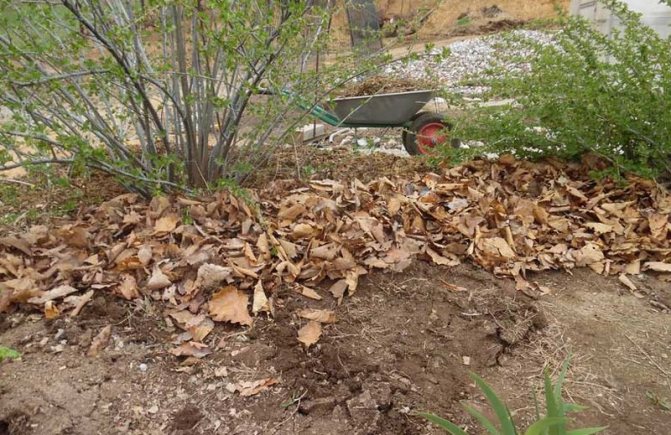

Mulching garden strawberries will keep moisture in the soil longer
Growing under film
If you grow Marmalade under cover, you can get the harvest 2 weeks earlier. To do this, in late March or early April, after the snow melts, cover the beds with foil. For the greenhouse, we first construct a frame (it can be iron or plastic arcs or a box of boards), and then we lay a plastic wrap on it. Care must be taken that it is stretched evenly and does not sag. On the sides, the film is fixed with bricks or earth.
On sunny days, the greenhouse should be ventilated by lifting one side. When flowering begins, open the sides of the greenhouse so as not to interfere with the pollination process. When the berries appear, remove the film.
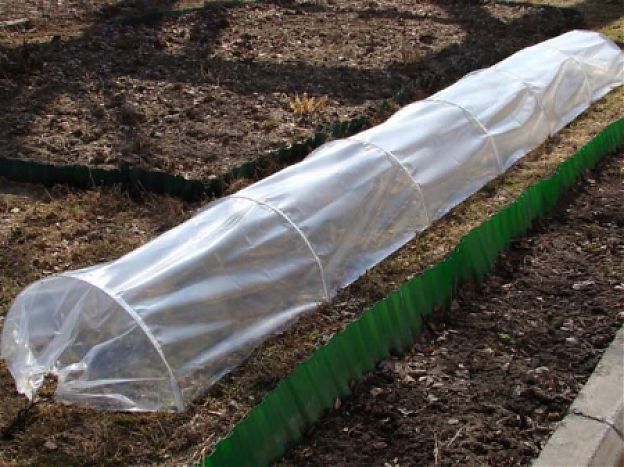

The greenhouse will help you get the harvest 2 weeks earlier
Video: caring for garden strawberries after harvest
Preparing strawberries Marmalade for winter
The Marmalade variety is declared as winter-hardy and frost-resistant, but still it is worth taking care of the shelter. With good snow cover, strawberries will survive frost at -30 ° C. But if suddenly there was a thaw, after which frost broke out again, then garden strawberries will freeze without shelter.
The best protection against frost is healthy foliage and absence of diseases and pests. Starting from mid-August, we start preparing:
- Loosen the soil in the aisles 15 cm deep, and around the bush 3-4 cm.
- Remove diseased leaves.
- Spill the beds with a weak solution of copper sulfate, manganese or Maxim to prevent the development of diseases.
- Be sure to sprinkle the beds and mulch them right away. Carry out hilling carefully so as not to harm the roots.
- Do not forget about the necessary feeding. Nitrogen fertilizers must be applied before September.
- To shelter strawberries, straw, fallen leaves, spruce branches, pine needles, sawdust, corn stalks and cob leaves, film or agrofibre are used.
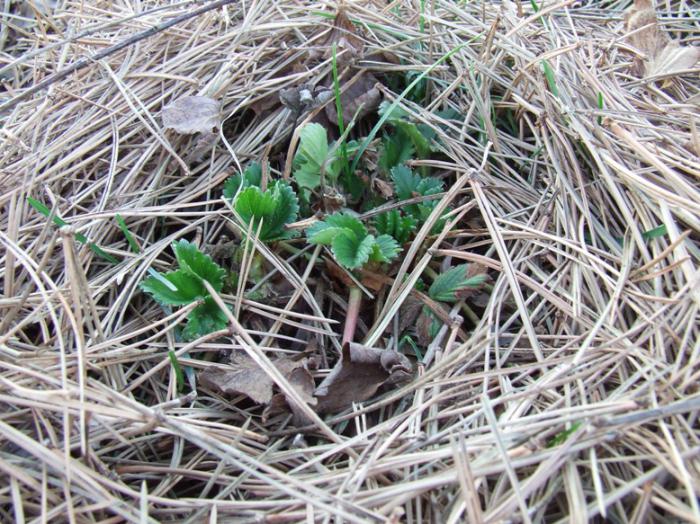

Marmalade belongs to winter-hardy varieties, but it is still worth taking care of shelter
When choosing a shelter, it is worth considering some of the nuances. Pathogenic microflora can develop under the film, and in spring the larvae of the May beetle or weevil will find refuge there. The straw can provide shelter for field mice, which are likely to spoil the roots of garden strawberries. Decaying needles will increase the acidity of the soil, which is not good for Marmalade.The foliage is very caked. Sawdust or wood chips are ideal.
Feeding rules
The feeding scheme for strawberries is presented in the table.
| Period | Fertilizer type | Proportions |
| Before planting | Humus, peat | 5-8 kilograms / 1 sq. m. |
| Superphosphate, wood ash solution, mullein | Mix 1 part mullein with 6 parts water. Can be combined with 60 grams of superphosphate and wood ash solution. To prepare the solution, you need to mix 150 grams of raw materials with 1000 ml of warm water. | |
| When the first leaves appear | Urea solution | 15 grams / 50,000 ml warm water. |
| Bloom | Potassium nitrate | 25 grams / 10 liters of warm water. Top dressing is applied at the root of the plant. |
| First half of September | Supershosphate, potassium magnesium, bone meal solution. | The proportions for supersophsate are 40-50 grams / 2 sq. m. For potassium magnesium - 40 grams / 1 sq. m. For a solution of bone meal - 1-3%. |
Reproduction
You can propagate strawberries Marmalade in 3 ways.
With a mustache
The most popular and natural is whisker reproduction. Moreover, Marmalade gives a lot of planting material. The first two tendrils are rooted from the mother bush, and the tendrils that follow them are removed.
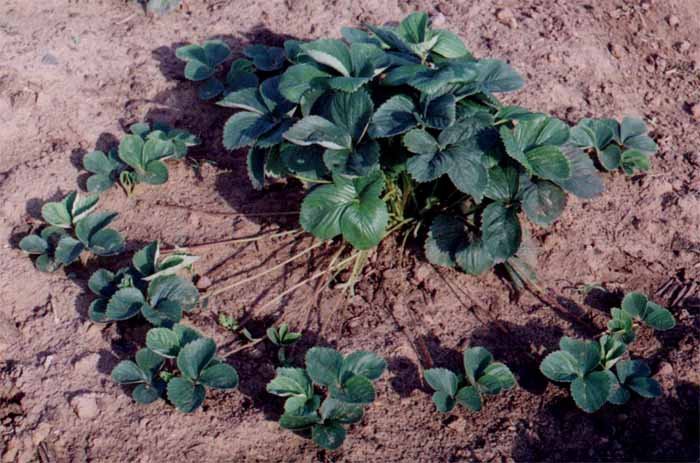

Marmalade gives a lot of planting material
- The selected mustache is rooted nearby in the garden bed or in a separate small pot immediately after fruiting.
- It is best to root immediately in a pot, this will make it easy to transfer the young plant to a permanent place.
- In late August or early September, the rooted mustache is planted in prepared beds.
To get enough healthy and strong mustache, experienced gardeners start a separate bed. Peduncles are cut off from plants to avoid the formation of berries. In this case, the strawberries will put all their strength into the formation of high-quality planting material.
Method of dividing the bush
Division of the bush. This method is usually used if you urgently need to transfer strawberries to a new place or if there is not enough mustache. You can divide the bush if it has reached 3-4 years of age.
- A healthy bush is divided by hand or with a sharp knife into as many pieces as possible. The main condition is that roots are present on each part.
- Old, dark roots are best cut off, leaving young ones - light. This method of reproduction is carried out from spring to August, so that the root system has time to recover.
- The planted part of the bush must be regularly spud up - this contributes to the formation of a root system. But do not cover the growth point with earth, otherwise the plant will die.
Seed propagation
Seeds are best purchased from a specialty store.
- Before sowing, it is recommended to soak the seeds in melt or rainwater for 3 days, changing the water twice a day.
- Make an earthen mixture that should be very loose. To do this, mix humus, peat, sand and black soil in equal parts.
- Then take the seeds out of the water and heat them on a radiator or on a sunny windowsill for 7 hours at a temperature of 35 ° C.
- The seeds are laid in well-moistened soil to a depth of half a centimeter.
- Cover with glass or foil and place in a room with a temperature of up to 25 ° C for 8-12 days.
- Ventilate once a day.
- You can moisten the soil with snow, spreading it on the surface, or from a spray bottle. Watering from a watering can is not worth it, the seeds are too small and can be washed out of the soil.
- With the appearance of two leaves, dive into separate pots.
- At the end of May, hardened seedlings can be planted.
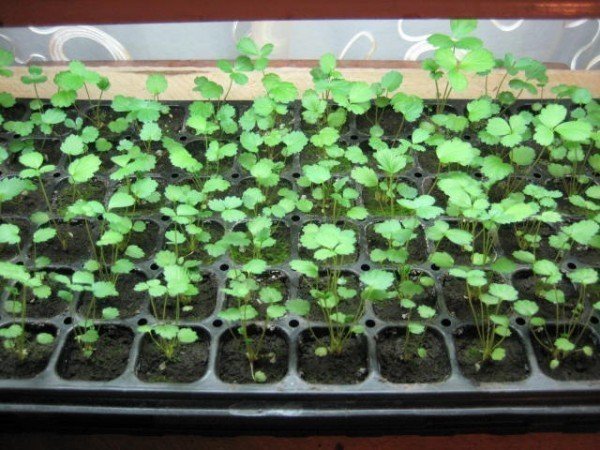

Seedlings of garden strawberries grown from seeds
A young plant grown from a seed may not transfer all the properties of the mother bush.
The subtleties of growing
In the first 12 months, you need to remember to cut the flowers from the plant.
This contributes to the rapid formation of the root system. Plants will delight with fruits in the second season.
With the onset of cold weather, it is advisable to mulch the plant with corn or straw stalks. It is imperative to put special material on top.
Film and greenhouse
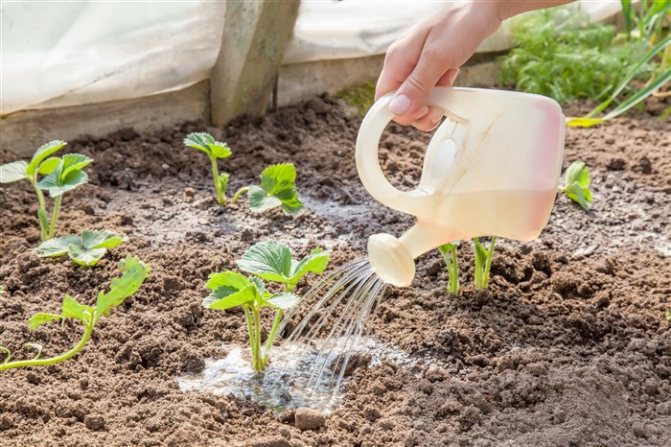

In a greenhouse under a film, Marmalade strawberries will accelerate their growth by about half a month.
- If you grow marmalade under the film, then the first berries will appear 1.5-2 weeks ahead of schedule.
- When greenhouse cultivation fruit production can be accelerated by 32–42 days.
Table: diseases and pests characteristic of the Marmalade variety
| Diseases and pests | Signs | Control methods and prevention |
| Gray rot | The appearance of a fluffy gray coating on berries, flowers and other parts of strawberries. The affected parts die off. |
|
| Brown spot | Brown spots appear on the leaves. The yield is dropping. |
|
| White spot | The leaves are covered with white spots and fall off. The harvest is declining. | |
| Strawberry mite | Damaged leaves shrivel and die off. The growth of bushes slows down. |
|
| Slugs, snails | They damage strawberries at different stages. |
|
Photo gallery: diseases and pests affecting Marmalade
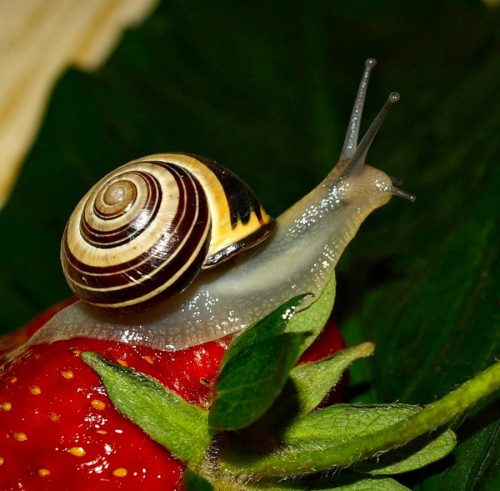

Snails love to feast on garden strawberries
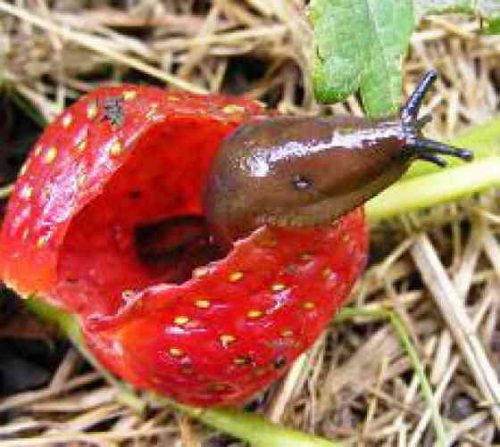

Slugs can spoil crops
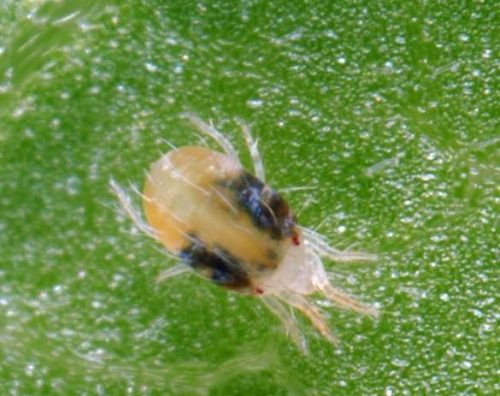

Strawberry mite slows down the growth of strawberry bushes
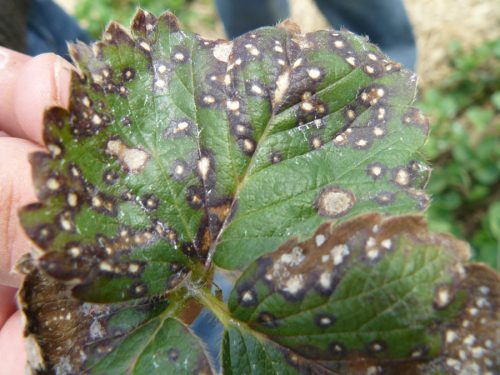

Garden strawberry leaf affected by white spot
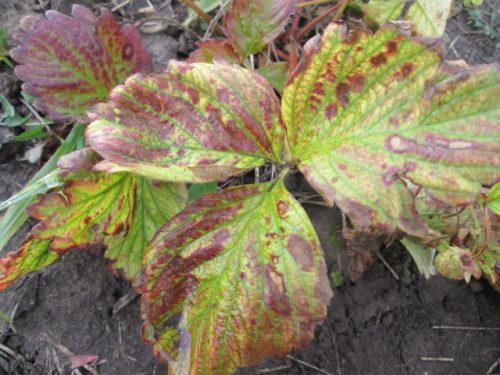

Brown spot on a strawberry leaf
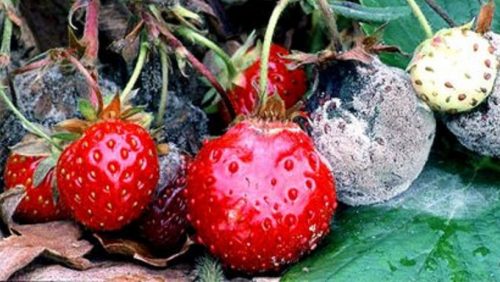

Gray rot affects berries and other parts of the plant
Features of fruiting
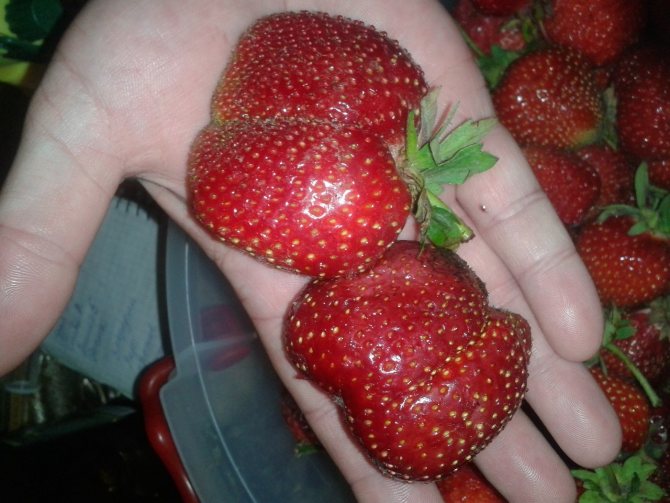

Marmalade is a variety of average fruiting period. The variety is not remontant, but with proper care and favorable weather conditions, it can occasionally bear fruit twice a season.
This is mainly done by young 2-3 year old plantings of this variety of strawberries. On older Marmalade bushes, this happens very rarely and does not have a massive character, and in newly laid out areas, cases of double fruiting have not yet been recorded at all.
Marmalade blooms in mid-May, and by the end of the first decade of June, you can already expect the appearance of the first ripe berries. The main crop is produced in the second half of June.
Fruit jelly bears abundant fruit on young 2-3 year old beds. On older plantings, the yield drops sharply, therefore, after three years of operation of the Marmalade bed, it is recommended to replace fruiting plants with new ones.
Harvesting and storage
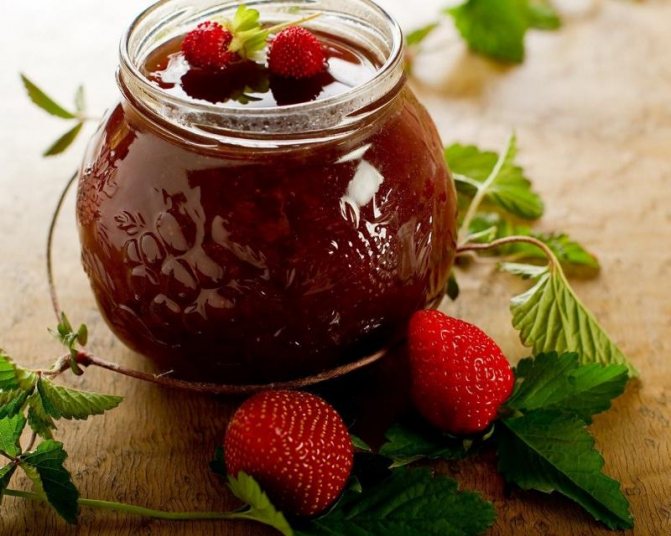

Delicious jam is one way to enjoy strawberry flavor in winter
June has come - the ripening time for sweet berries. Harvesting is done manually, with an interval of 1-3 days. The berry is removed from the bush along with the stalk, so it is stored longer and does not lose juice. Prepare several containers at once to collect. Put berries in one for storage in the refrigerator, in the other for processing or freezing, in the third for food. The berry collected in this way does not have to be shifted several times, which will help preserve its integrity and extend the shelf life.
Of course, it is best to eat fresh berries, as long as it contains a lot of vitamins and minerals.But sometimes a good harvest makes you think about options that increase the shelf life of garden strawberries. This can be done in several ways:
- For better preservation in the refrigerator, berries should be kept in low and flat cardboard or wooden containers, stacked in 2 - 3 layers, but no more. Do not wash strawberries before placing them in the refrigerator. Do not close containers tightly. The shelf life of berries at temperatures from 0 to 2 ° C is about 5 days. At 6 ° C - 3 days.
- Strawberries can be stored frozen for up to six months. The berries prepared for freezing are washed and laid out on napkins to dry. The stalk is best removed after thawing. Dried berries are placed on a tray and sent to the freezer, preferably with a temperature of -25 to -35 ° C. After freezing, the berries are packed in bags and stored at a temperature of -12 ° C. Do not allow the freezing procedure to be repeated, after which the berry will simply creep.
- Also marmalade makes wonderful jams and confitures, preserves, compotes, berries mashed with sugar, mashed potatoes, candied fruits.
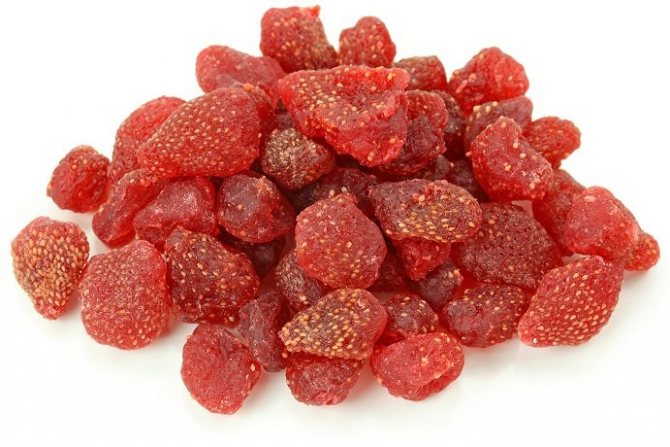

Marmalade makes wonderful candied fruits
Testimonials
Tatyana, 41 years old, Rostov region.
My mother-in-law complains that Marmolada's taste is too simple, "no zest", sour. In my opinion, she's just in a hurry and rips her off immature. When the berries turn dark red, then they are very sweet and aromatic. My sister grows up in the Krasnodar Territory, where everyone is delighted with Marmaladka: beautiful, fruitful, she is a little sick. Maybe it's also about the climate and soil.
Boris, 49 years old, Dnipro
Our variety has shown itself well. All the bushes that were planted last year overwintered well under straw and this season they gave a bountiful harvest of large, beautiful berries. Unlike many industrial varieties, strawberries are not "oak" or tasteless. It begins to ripen closer to mid-June. He loves watering, the leaves wither in the heat, but the berries are almost not baked, they just become less juicy. Poor mustache, so we will leave everything to expand our plantation.
Irina, 53 years old, Ufa
These strawberries are good only for long-term storage: they can be dried or frozen, candied fruits can be cooked. So it is - no pleasure. Marmalade reminds me of Dutch tomatoes: outwardly beautiful, but without taste and smell.

